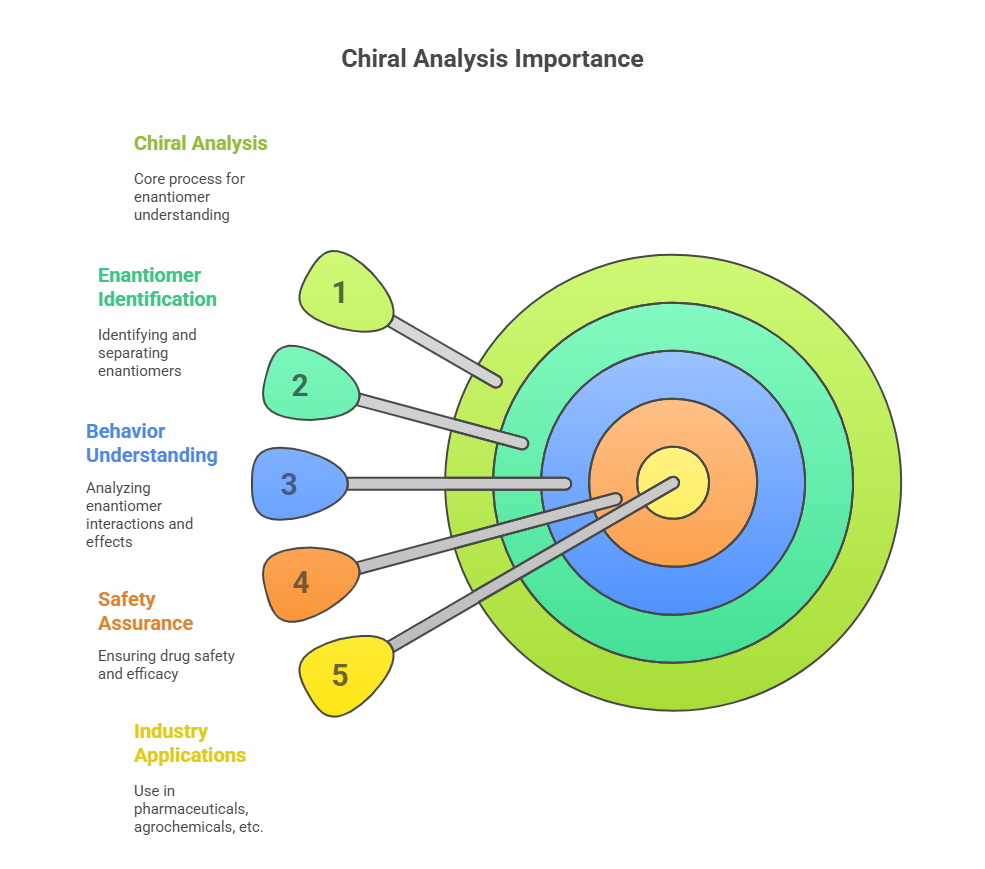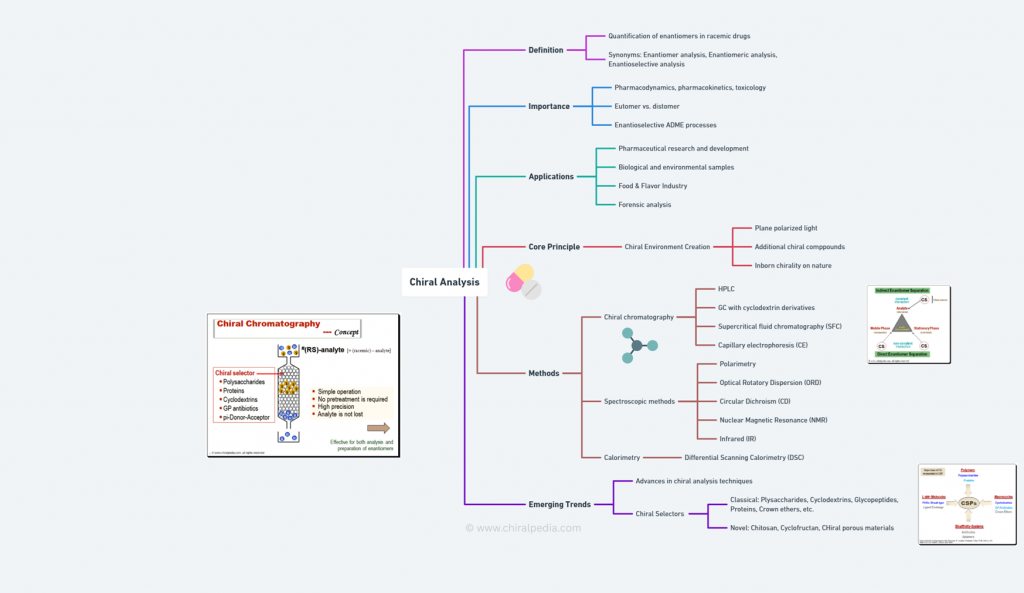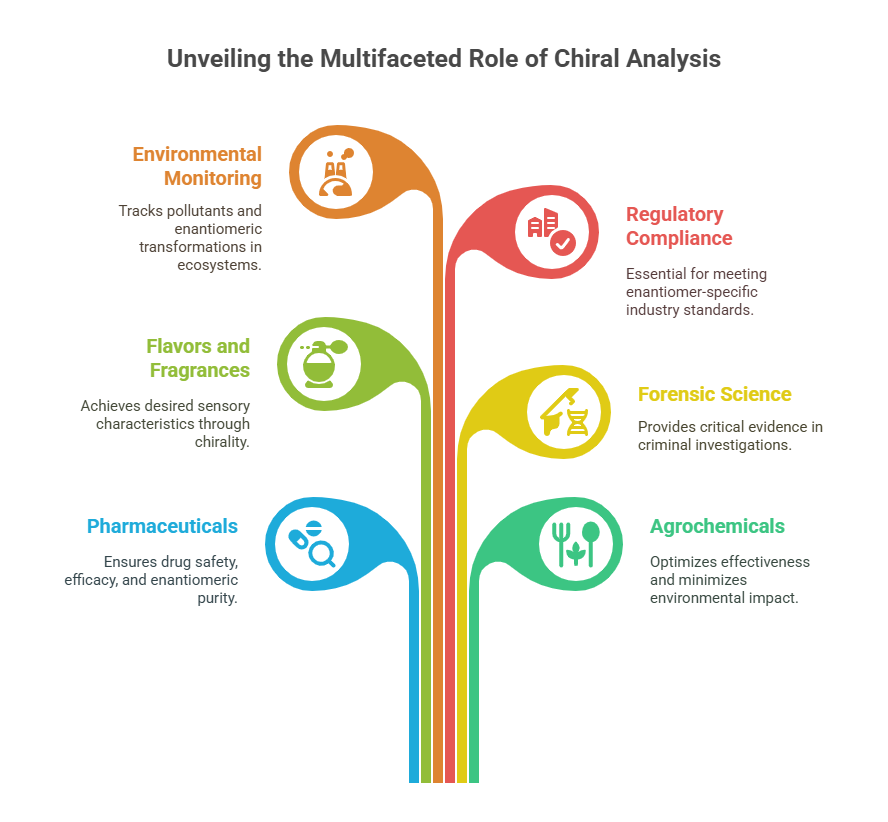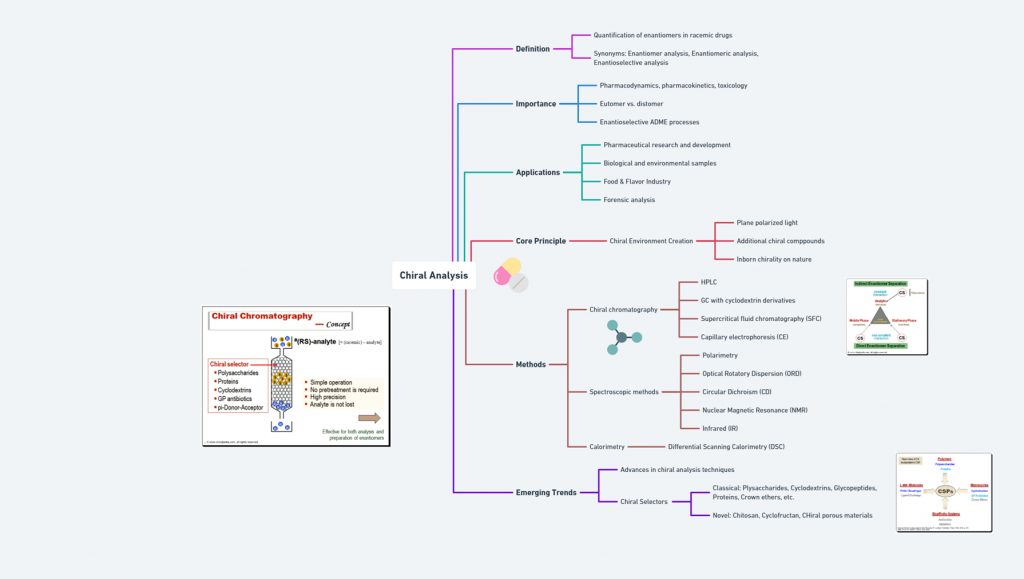Chirality: it’s everywhere – shaping how molecules behave, how medicines work, and even how scents and flavors hit our senses.
Prelude
In fields like pharmaceuticals and environmental science, understanding chirality isn’t just important – it’s essential. Many biologically active compounds are chiral, and their mirror-image forms (enantiomers) can have dramatically different effects. One enantiomer (the eutomer) might deliver the desired therapeutic benefit, while the other (distomer) could cause unwanted side effects – or worse, toxic reactions. Even when the “inactive” form isn’t harmful, it still puts extra pressure on a patient’s metabolism, something no one needs when they’re already fighting illness.
To help unpack the complexities of chiral science, a visual-first approach – using mind maps and imagery is employed to make key concepts more intuitive. Whether you’re new to the topic or seeking a clearer understanding, this article is designed to make the science more accessible and engaging.
Why Chiral Analysis ?
When a racemic drug (a 50:50 mix of enantiomers) enters the body – a chiral environment itself – this balance doesn’t hold. Selective absorption, metabolism, and elimination can skew the ratios, making it vital to track each enantiomer separately. That’s where chiral analysis steps in. Chiral analysis isn’t just about identifying the enantiomers; it’s about understanding their behaviors, interactions, and impacts. It’s a crucial process for ensuring the safety, efficacy, and quality of pharmaceuticals, agrochemicals, flavors, fragrances, and more.

Mind Map
To make sense of this fascinating and complex topic, I’ve put together a Mind Map on Chiral Analysis.
This visual guide highlights the key principles, techniques, and applications in a clear, accessible way. The mind map outlines what chiral analysis is, why it matters, core analytical techniques used, practical applications, and future trends, providing a full-circle view of the field at a glance. Whether you’re a student diving into stereochemistry for the first time, a researcher deepening your expertise, or a professional looking to stay sharp, this Mind Map offers a quick yet comprehensive overview.
Dive in and explore how chiral analysis touches everything from drug development to forensic science—and discover the cutting-edge trends shaping its future!

Closing remarks
Chiral analysis plays a pivotal role in understanding and managing the behavior of enantiomers – molecules that are mirror images of each other but not superimposable. Here’s why it’s significant:
- Pharmaceuticals: In drug development, one enantiomer may be therapeutically active (eutomer), while the other could be inactive or even harmful (distomer). Chiral analysis ensures the safety, efficacy, and quality of medications by tracking enantiomeric purity and behavior.
- Agrochemicals: Many pesticides and herbicides are chiral. Analyzing their enantiomers helps optimize their effectiveness while minimizing environmental impact.
- Flavors and Fragrances: The sensory properties of these compounds often depend on their chirality. Chiral analysis ensures the desired characteristics are achieved.
- Forensic Science: It aids in identifying chiral substances in criminal investigations, providing critical evidence.
- Environmental Monitoring: Chiral analysis helps track pollutants and their enantiomeric transformations in ecosystems.
- Regulatory Compliance: With increasing emphasis on enantiomer-specific products, chiral analysis is essential for meeting industry standards

By mapping enantiomer behavior, this field ensures drug safety, efficacy, and regulatory compliance while driving breakthroughs in agrochemicals, forensics, and personalized medicine. The Chiral Analysis Mind Map distills these complexities into actionable insights, spotlighting cutting-edge techniques like advanced chiral chromatography, emerging trends in green chemistry, and strategic patent approaches.
Further Reading
Grybinik, S., Bosakova, Z. An overview of chiral separations of pharmaceutically active substances by HPLC (2018–2020). Monatsh Chem 152, 1033–1043 (2021). https://doi.org/10.1007/s00706-021-02832-5
https://en.wikipedia.org/wiki/Chiral_analysis
Changlong Hao,, Recent Progress in Detecting Enantiomers in Food, Molecules 2024, 29, 1106. https://doi.org/10.3390/molecules29051106; https://www.mdpi.com/1420-3049/29/5/1106
Gerardo Alvarez-Rivera, Mónica Bueno, et al., Chiral analysis in food science, TrAC Trends in Analytical Chemistry, Volume 123, February 2020, 115761. https://doi.org/10.1016/j.trac.2019.115761; https://www.sciencedirect.com/science/article/abs/pii/S0165993619305606

